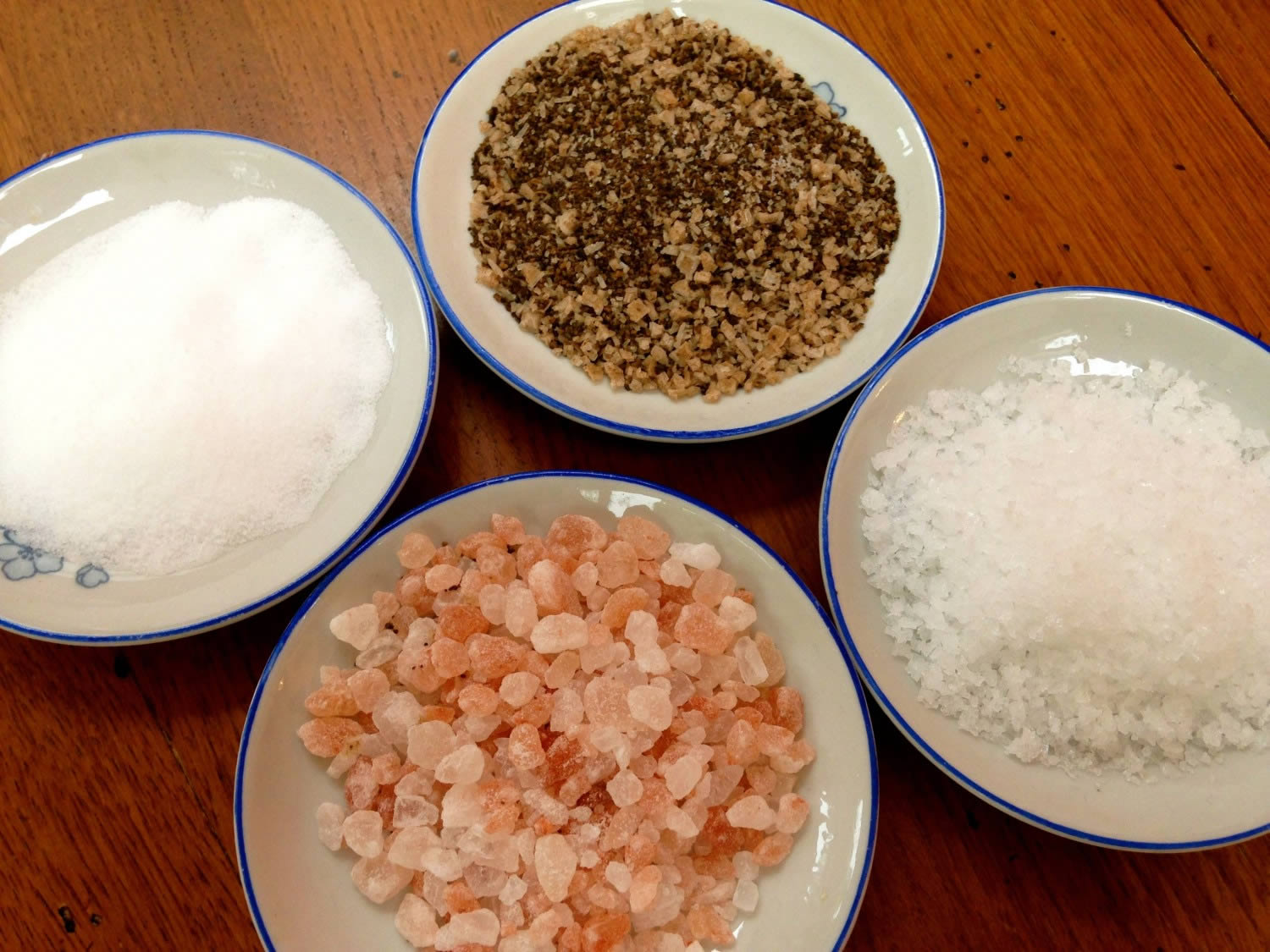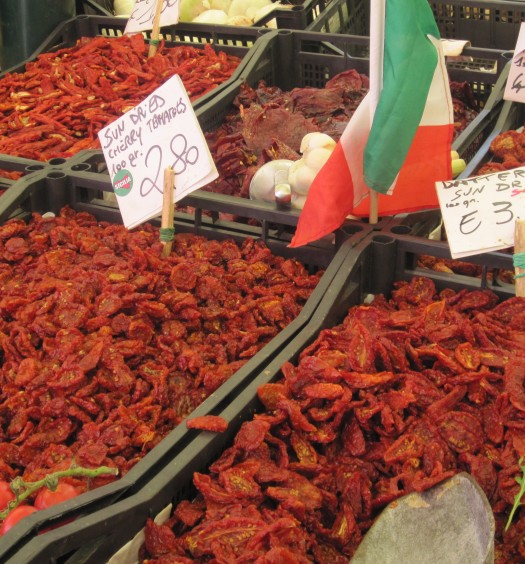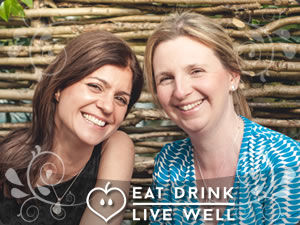Should we be reducing our salt intake?
 Before I became a nutritionist I rarely used salt. Ten years down the line and I seem to be increasingly liberal with my sprinkling of salt over certain foods. But it’s not just any salt; I’ve been entranced by beautifully packaged ‘healthy’ seaweed mineral salts, attractive white flakes of sea salt and rose pink Himalayan salt.
Before I became a nutritionist I rarely used salt. Ten years down the line and I seem to be increasingly liberal with my sprinkling of salt over certain foods. But it’s not just any salt; I’ve been entranced by beautifully packaged ‘healthy’ seaweed mineral salts, attractive white flakes of sea salt and rose pink Himalayan salt.
But I’ve recently had a nagging feeling that I may have fallen for the oh-so-efficient marketing arms of these salts. It’s all very confusing – can salt be healthy or should we be doing all we can to reduce our intake? I decided to do a little more research.
My conclusions? Well read on. I’ll be keeping my pretty pink salt grinder and dark green seaweed shaker but my eyes have been opened a little more than I’d anticipated.
But first some statistics:
- Sodium x 2.5 = salt and confusingly both can be listed on food packaging
- In the UK, current advice is that adults should have no more than 6 grams of salt a day (a teaspoon). Babies need no added salt, 1-3 year olds a maximum of 2g/day, 4-6 year olds 3g/day and 7-10 year olds 5g/day.
- The American Heart Association and American Diabetes Association advise a salt maximum of just under 4g/day and The World Health Organization 5g/day
- Average salt consumption is over 8g/day in the UK and over 9g/day in the US
- Over 75% of our salt intake is from processed foods (‘hidden’ salt)
But is salt really bad for us? For thousands of years salt has been a coveted food, traded, prized, and used for flavouring, but more importantly as a food preservative, especially for meat. Have we really got it so wrong?
The answer annoyingly, isn’t straightforward.
‘Salt’ as we know it, is a compound made of two elements, sodium and chloride, both of which humans need. Chloride helps to make up digestive juices, and sodium is essential for nerves and cells (including those in the brain) to work properly, and for muscle activation. Sodium chloride helps to balance fluid levels in the body.
So there’s no doubt we need salt. The question is whether we need added salt or whether we can get all we need from plants, animals and seafood.
In large amounts we know that salt is not good for us; in some people it raises blood pressure, and excess salt has been linked to a range of conditions including kidney problems, osteoporosis, gastric cancer and obesity.
Yet when we look at whether salt reduction actually reduces mortality rates (i.e. people dying), the evidence appears inconclusive. In fact recent research indicates that low salt diets may be as damaging as high salt diets. It seems probable that there is an ‘optimum’ salt intake; neither too low, nor too high.
When we look back to the Paleolithic (Caveman) period it appears they followed a relatively low salt diet of around 2g of salt, daily, obtained from plant foods, meat and seafood. The major difference was that their potassium levels were far higher due to plant food intake.
Today, our potassium levels are lower – the majority of us don’t even make our five a day fruit and veg. But our sodium levels have dramatically increased, primarily from processed foods.
The World Health Organization recommends raising potassium to at least 3510mg/day at the same time as restricting salt to under 5g, and studies show that this strategy can positively benefit health.
An effective way to achieve this is to:
- reduce processed food which accounts for 75% of our salt intake
- eat more high potassium foods: avocados, bananas, cabbage, celery, chard, dried fruit, fish, greens, kale, melons, mushrooms, white beans, parsley, potatoes, spinach, sweet potatoes
- use more herbs, spices, chilli, garlic, onions, vinegars, and oils for flavourings instead of added salt
Importantly, this then allows me to retain my tiny sprinklings of ‘healthy salts’ that I like adding to certain dishes at home.
And are my healthy salts actually healthy?
 Well. It turns out that disappointingly all salts, Himalayan, Sea and Rock salt included, have pretty much exactly the same sodium chloride levels as table salt, between 35-39%. The much-quoted trace minerals aren’t enough to make a remote bit of nutritional difference (e.g. magnesium at 0.1%, calcium 0.16%) in the tiny quantities I use. However, the minerals in these salts are beneficial; they affect our aroma and flavour senses, with the result that you don’t need to use high quantities to achieve a little taste.
Well. It turns out that disappointingly all salts, Himalayan, Sea and Rock salt included, have pretty much exactly the same sodium chloride levels as table salt, between 35-39%. The much-quoted trace minerals aren’t enough to make a remote bit of nutritional difference (e.g. magnesium at 0.1%, calcium 0.16%) in the tiny quantities I use. However, the minerals in these salts are beneficial; they affect our aroma and flavour senses, with the result that you don’t need to use high quantities to achieve a little taste.
Table Salt itself is heavily refined, with trace minerals and impurities removed, meaning it is over 97.5% sodium chloride. Anti-caking agents, sometimes containing aluminium are added to stop it clumping together. In some countries iodine is also added.
Sea Salts (e.g. Maldon, Celtic, Cornish) are made by evaporating sea water, ideally from unpolluted areas. The amount of sodium varies in sea salts (but only by a few percentage points) as do the trace minerals, dependent on where it is harvested and the amount of processing it goes through.
 Himalayan Pink Salt is mined from a salt mine in Pakistan – the pink colour comes from the iron oxide it contains. Himalayan salt is a trace source of many minerals and has a perfect ‘crystalline profile’; some people believe less fluid is pulled from the cells to break down the crystals, whereas table salt, with it’s altered chemical structure due to high heat processing, requires more fluid and so has a more negative impact on health.
Himalayan Pink Salt is mined from a salt mine in Pakistan – the pink colour comes from the iron oxide it contains. Himalayan salt is a trace source of many minerals and has a perfect ‘crystalline profile’; some people believe less fluid is pulled from the cells to break down the crystals, whereas table salt, with it’s altered chemical structure due to high heat processing, requires more fluid and so has a more negative impact on health.
Lo-Salt is a good option, although is refined and contains anti-caking agents. This salt contains only 33.3% sodium chloride vs 66.6% potassium chloride so would appear to fit our Paleolithic origins as well as WHO guidelines.
Seaweed Mineral Salts are seaweed and sea salt combinations. Seaweed is a fantastic source of nutrients and using it as a traditional salt ‘replacement’ is an easy way to get it into the diet.
It’s hard to avoid processed foods totally, but if you’re trying to keep within the 6g per day (adult) guidelines, here’s a quick reminder of how much is in a few common foods:
| Item | Serving size | Salt (grams) |
| Pizza Express American Hot Pizza | 1 pizza | 4.9 |
| Zizzi Spaghetti Bolognese | adult | 2.7 |
| Tesco Finest Lasagne Forno | 1 pack 400g | 2.2 |
| McDonalds Quarter Pounder with Cheese | 1 | 2.2 |
| Richmond Thick Pork Sausages | 2 49g sausages | 2.2 |
| Waitrose Chicken Jalfrezi | 1 pack 350g | 1.66 |
| Tesco Unsmoked Bacon | 2 rashers | 1.4 |
| Pizza Express Garlic Bread | 1 portion | 1.4 |
| New Covent Garden Soup Carrot and Coriander | ½ carton | 1.4 |
| Heinz Baked Beans | ½ can | 1.3 |
| Essential Waitrose Tomato and Chilli Pasta Sauce | ½ pot | 1.27 |
| Heinz Cream of Tomato soup | ½ can | 1.2 |
| Doritos Cool Original | 50g | 0.92 |
| Heinz Reduced salt baked beans | ½ can | 0.9 |
| Fish fingers | 4 | 0.9 |
| Amoy Dark Soy Sauce | 5mls | 0.8 |
| Heinz Spaghetti hoops | ½ can | 0.7 |
| Hovis best of both | 2 slices | 0.64 |
| Amoy Reduced Salt Soy Sauce | 5mls | 0.6 |
| Kellogg’s All bran | 40g | 0.5 |
| Cathedral City Mature Cheddar Cheese | 30g | 0.5 |
| Tesco British Crumbed Ham | 1 slice | 0.5 |
| Hula hoops | 24g pack | 0.43 |
| Kettle chips lightly salted | 40g | 0.36 |
We hope you enjoy this blog post, let us know your thoughts in the comments below or on social media – we’re on Twitter, Facebook, Instagram and Pinterest. And don’t forget to sign up to our newsletter to receive a monthly update of our recipes, nutrition tips and expert advice.





